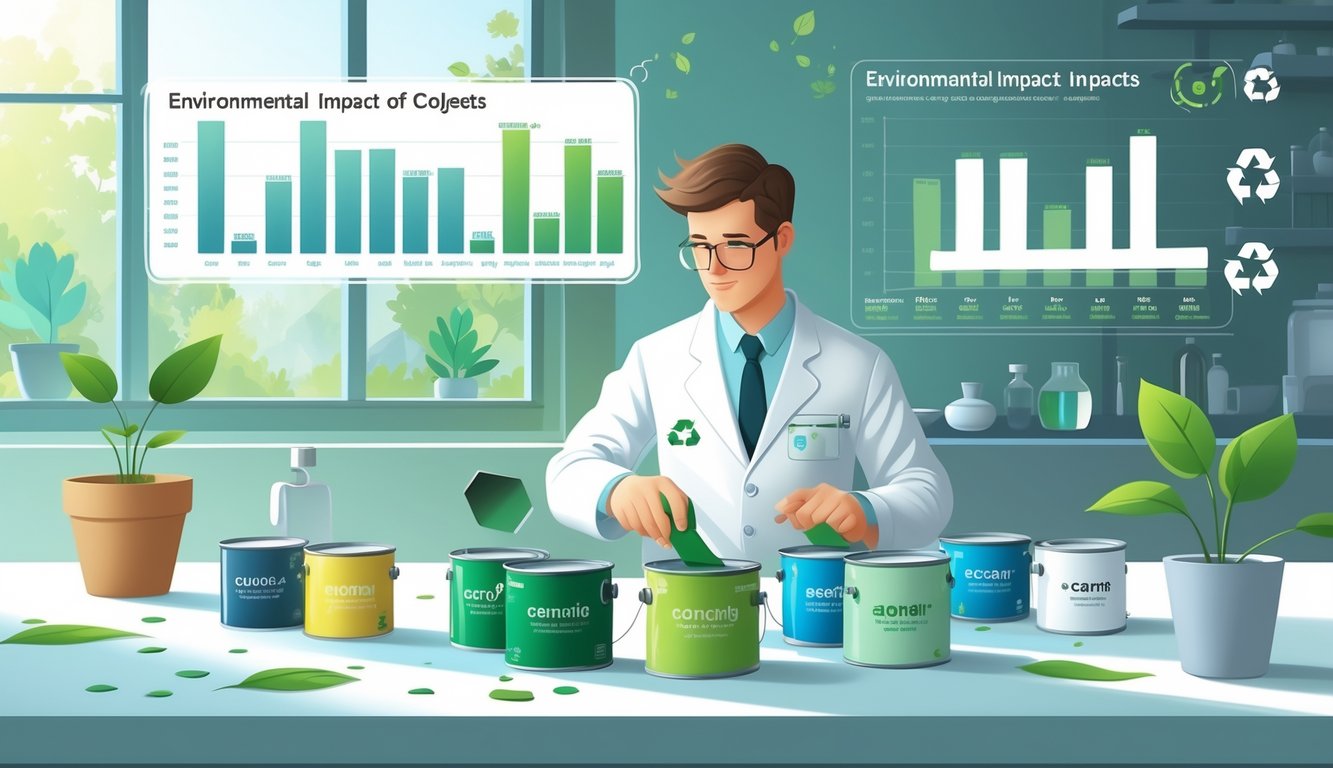
Evaluating Environmental Impact of Different Paints

It’s wild—one “eco-friendly” paint smells like grass, another like death, and both have green labels. I think about my neighbor, who swore her garage was mold-proof because she used “natural paint,” but then it peeled right off mid-humidity. So much for that.
Comparing Traditional Paints to Natural Paints
Traditional paint? Total chemical soup. VOCs float around long after it dries, and the EPA says they’re not just bad for smog—they’re health risks. Manufacturers brag about “low-odor technology,” but whatever. Water-based acrylics are a bit better, but solvent-based oil paints? VOC city. ScienceDirect and every industry training I’ve sat through says the same.
Natural paints are a crapshoot. Supposedly biodegradable, made from plants, minerals, milk casein. I tried a batch in a bathroom, and it went moldy in a week. Eco-friendly paints like clay- or lime-based ones usually skip the synthetic stuff, but performance is all over the place. Painter friend swears by a mineral pigment blend—zero off-gassing, and she’s super allergic, so I kind of believe her. Still, I trust third-party certs (Greenguard, EU Ecolabel) way more than whatever’s printed in neon green on the can.
Assessing Environmental Footprint
Manufacturing? I don’t get it. Paint companies brag about “carbon-neutral” factories, but then all the plastic packaging and chemical waste from pigment processing just, what, disappears? Half the ingredients don’t need to be there, but they are—for shelf life, brightness, who knows. Natural paint brands love to parade their “carbon-neutral” status, but every sample pot shipped from across the country racks up the footprint anyway.
Everyone I trust says the real impact isn’t just about VOCs. Titanium dioxide for white paint, synthetic dyes for bold colors? Total resource hogs. Some eco brands swap in linseed oil or clay, and that means fewer microplastics, lower impact—unless the raw stuff’s flown in from somewhere random. Sometimes the “natural” paint actually travels further than the regular stuff. Go figure.
Debunking Marketing Claims: What to Watch For
The more I look for an eco-friendly label I can trust, the more I hit sketchy branding and, honestly, nonsense. “Sustainability” logos everywhere—half look official, most mean nothing. Who’s calling these certifying bodies? Not me. “Green” claims everywhere, but it’s the same old VOC soup, just with leaves on the can.
Greenwashing in the Paint Industry
Go down any hardware aisle—bam, a wall of cans screaming “eco,” “green,” “natural,” “Earth friendly.” Most brands toss out vague words that sound clean, but never back it up. Huge forests on the label, maybe a recycled symbol, but no details about what’s actually inside or why it’s supposedly good.
It’s not new. Industry experts say companies hype one “eco” thing and ignore the rest. You get “low odor” paint, but the supply chain and disposal are still garbage. They’re counting on you not asking for proof. Real standards like Green Seal, GREENGUARD, EcoLogo? Rarely on the shelf. Honestly, the more generic the label, the less I trust it.
How to Spot Misleading Eco-Friendly Labels
Fastest red flag: “eco-friendly” on the can, no numbers, no context. I keep a list of sketchy stuff—generic earth tones, “biodegradable” talk, but no mention of VOC levels, raw materials, or transparency. If there’s data, it’s buried. Some brands slap on fake-looking leaves, made-up certification badges, or just awkward green bubbles.
Want authority? Look for real certifications like Energy Star or GREENGUARD—even for paint. Experts always tell me, “If you can’t trace the safety to a third-party, it’s probably just marketing.” If a label brags “free of X” but won’t list what’s in there or what replaced it, I’m done. Sometimes I see a green promise, dig into the MSDS, and—yep, same old solvents. Isn’t it wild how “sustainable” paint gets shipped across three continents?
Expert Insights: What Makes a Paint Truly Safe?
Honestly, I’ve lost track of how many times I’ve stood in the paint aisle, two cans in hand, both shouting “non-toxic,” and yet, somehow, my eyes are burning before I even get them home. Last time I called a design professor for advice, I left the call doubting basically everything in my closet—why the heck do all these cans say “natural” if the smell could clear a room for days? Paint “safety” and “sustainability”—ugh, those words—aren’t even close to straightforward. I mean, the leaf logo? Not fooling me anymore.
Essential Expert Criteria for Eco-Friendly Paint
Trying to read an ingredient label on paint is like squinting at a secret code. Suddenly, I’m less interested in the color and more in figuring out what “proprietary blend” is supposed to mean. (Spoiler: it means “we’re not telling you.”) Jonsara Ruth from Parsons says there’s no universal definition for eco-friendly paint. Great. So now I’m stuck nitpicking ingredient lists and Googling certifications instead of, you know, painting. If a paint brand won’t show me every ingredient, I’m out. “Natural” paint? Could be clay, lime, milk, or just… vibes. “Zero-VOC” sometimes means before they add pigment. And, weirdly, some eco paints still have allergy warnings, or just skip listing the nastier fillers. Turns out, transparency on ingredients and manufacturing is worth way more than a recycled can—no matter what Sustainable Kitchens says about “responsible packaging.” Sorry, but a nice box doesn’t clean the air.
Expert Opinions on Sustainable Painting Practices
So, half the “green” paint promises still end up with cans in the landfill. My neighbor tried recycling his tester pots—nope, city wouldn’t take them. Some UK brands are now bragging about tin recycling schemes and solvent-free peel-and-stick testers. I thought it was marketing fluff, but apparently, they really do cut waste by a ton. Paint-to-order? Never crossed my mind, but now I’m picturing mountains of unused paint getting burned or dumped.
Indoor air quality? My friend opens every window, even in winter, and now I get it—ventilation actually helps, regardless of what the can says. The “secret” to sustainable painting? Buy less, use decent brushes, and look for brands that actually publish their carbon numbers. Most guides skip this. Grand Designs Magazine points to brands with traceable low-carbon production, so now I ignore the cute labels and just check the data. Also, why does every “eco” paint still come shrink-wrapped? If I need a steak knife to open the brush set, something’s off.